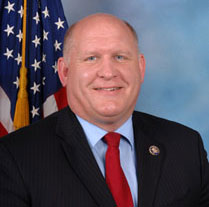WASHINGTON, D.C. – U.S. Reps. Glenn ‘GT’ Thompson (R-PA) and Louise M. Slaughter (D-NY) introduced H.R. 754, the All Children Are Equal (ACE) Act, a bipartisan bill that will correct the way funds intended to educate disadvantaged students are allocated under Title I of the Elementary and Secondary Education Act (ESEA), currently known as No Child Left Behind.
The House Committee on Education & the Workforce has indicated a need to reauthorize the law during the 114th Congress.
“For far too long the federal government has treated disadvantaged students differently due to their geographic location,” said Thompson.
“This is not a rural versus urban issue, this is about fairness and ensuring school districts across the nation can address high concentrations of poverty.
“The All Children Are Equal Act does not cost the taxpayers any new money and will transition to a more equitable manner of offsetting the effects of poverty on young learners.”
“We owe it to future generations to ensure that all children are truly equal under the eyes of the law,” added Thompson.
“Right now, the federal formula for education funding shortchanges upstate school districts like Rochester, hurting our kids and local residents by increasing the burden on local government,” Slaughter said.
“When schools are forced to spend more to provide our kids with a basic education, they have less to spend on other initiatives like combating poverty, which is incidentally the most significant indicator of low student achievement.
“The promise of America means that everyone has an opportunity to succeed – fixing the funding formula would be one of the best things we can do to fulfil that promise.”
Under current law a portion of Title I funding empowers a number weighting system, which provides additional local education agencies (LEAs) with higher student populations but a low percentage of students living in poverty.
Conversely, LEAs with higher percentages of poverty but lower student populations are shortchanged.
The ACE Act would gradually phase out the number-weighting system and uses a more accurate measurement: percentage weighting. Percentage weighing is based on the percentage of disadvantaged students in an LEA, rather than the population of students.
The ACE Act will redirect federal funds to schools districts that need it the most, giving students a greater opportunity to succeed and break the cycle of poverty.
